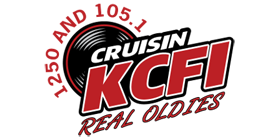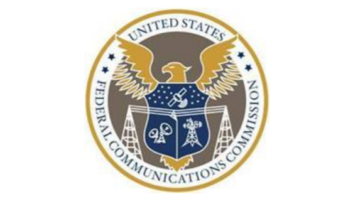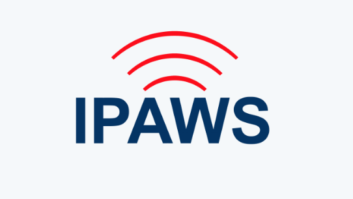In 1993, the FCC authorized the extension of the AM band’s upper end to include 1605 to 1705 kHz, adding 10 more broadcasting slots to the band. Its intent was to selectively open those frequencies to existing stations that most significantly contributed to congestion and interference in the standard AM band, easing interference on the one hand and providing better protection to ones that migrated.
A total of 88 expanded band channels were allotted, and licenses were granted to 54 stations that migrated. That’s out of the 4,692 AM stations operating in the U.S. as of Sept. 30, 2015 (source: FCC).
The expanded band may be in the news again soon thanks to questions asked by the Federal Communications Commission in its recent AM “revitalization” order (see sidebar). Those include whether to open the band to more stations and whether to use it to authorize operations of all-digital AM.
We wondered how stations on the expanded band are faring these days. Is it a wasteland? Or perhaps an unseized opportunity? To find out, Radio World spoke with WNRP (1620 AM), KCJJ (1630 AM) and WMLB (1690 AM). All three broadcast in the expanded AM band using 10,000 watts during daytime and 1,000 watts at night.
THE THREE STATIONS
WNRP “NewsRadio1620” is a news/talk station based in Pensacola, Fla., along with its sister country music station CatCountry 98.7 FM. Through previous incarnations, call signs and ownerships, WNRP has been on the expanded AM band since 1998. WNRP moved its transmitter site across the state line from Alabama to Florida in 2002, and has been operating a news/talk format since 2007.
“Weekdays we are live and local 5 a.m. to 11 a.m. and 4 p.m. to 7 p.m.,” said Dave Hoxeng, who owns and operates both stations with his wife Mary. “We have local newscasts twice an hour from 5 a.m. to 9:30 p.m.”
“The Mighty 1630” KCJJ is a news/talk/sports comedy expanded band station. Located in Iowa City, Iowa, KCJJ 1630 covers eastern Iowa and western Illinois. KCJJ was on 1560 AM from 1977 until 1998 at 1,000 watts power.
“We moved to 1630 in 1998, and boosted our power ten-fold,” said KCJJ General Manager Tom Suter. Moving into the sparsely-populated expanded band eliminated KCJJ’s chances of interfering with other AM stations even at much more power. “This made the move a no-brainer, even with the $160,000 cost of a new AM transmitter factored in,” said Suter.
AM 1690 WMLB “The Voice of The Arts” is based in Atlanta. WMLB describes its eclectic format as being “driven by the spirit of Atlanta” WMLB’s programming includes a diverse music mix, astronomy, cultural information, public affairs and news from CBS News. WMLB launched on 1690 AM in 2003.
“We’ve done well on 1690, even though WMLB has not subscribed or taken part in either the Arbitron or Nielsen rating systems,” said WMLB Vice President/General Manager Jeff Davis. “Instead, we conduct our own surveys, and use our survey data to attract local retailers as advertisers.”

Andrew McKay works the mic at NewsRadio 1620 in Pensacola, Fla.TECHNICAL REALITIES
All three of these stations saw broadcasting on the expanded AM band as a way to increase their transmission power, overall reach and potential audience size.
“The expanded band offered the promise of a better quality AM signal due to less interference at 1620, and we were excited when we launched in 2005,” said WNRP’s Hoxeng. Meanwhile, moving to the expanded band offered KCJJ the chance to boost its transmission power, while the new band gave WMLB a window into the crowded Atlanta radio market.
So what are the technical realities of being on the expanded band? Well, for WNRP, being on 1620 has proved to be a problem.
“The rising electrical noise floor in America really hurts our RF signal receivability,” Hoxeng said. “Signal propagation [at 1620] is much worse than 550 kHz,” he added. “The other challenge we have in this part of the country is poor ground conductivity of <1 [millisiemens per meter], compared to 30 in parts of the Midwest. It would be great if FCC recognized this severe handicap in allowing AM broadcasters in poor conductivity areas to raise output power proportionally.”
In contrast, WMLB hasn’t experienced the problems reported by WNRP in the expanded AM band. When it comes to reaching their desired audience, transmitting on 1630 kHz has “performed as well as any AM station is going to perform,” said Davis. Apparently WMLB’s AM signals have been received up to 250 miles away from Atlanta on a regular basis. “Meanwhile, DXers who use extra-long antennas and sensitive receivers to capture distant AM signals have reported receiving us in Lapland, Finland,” Davis said.
KCJJ’s Suter is delighted by the expanded band’s reach. “I think it’s been great,” he said. “If we had to do it over again, we would.” He said the money spent on a new AM transmitter to move from 1560 to 1630 “was well worth it.”
As for KCJJ not being available on older car AM radios with a top AM frequency of 1610 kHz? “That was only really an issue when the expanded band was launched, and it has diminished in succeeding years,” said Suter. “The expanded band has been a reality on car and portable radios now for long enough, that we no longer worry about this problem.”
X-BAND AND REVITALIZATION
When the FCC issued rules for AM revitalization late last year, it also proposed changes that touch on the expanded band.
Most immediately, the commission said that there are 25 instances in which “migrating” stations still hold both standard- and expanded-band licenses, even though they were supposed to turn in one or the other after the first five years. “We see no justification for allowing licensee retention of high-interfering standard-band stations along with the expanded-band stations meant to replace them,” the commission wrote, so it tentatively plans to force them to choose within 12 months of a planned order. It’s taking comments on this.
The FCC then asked new questions. Should it open the expanded band to even more stations? Under what circumstances?
Some observers think the band is underused; some say the FCC should offer space on the band to applicants for new AM stations, or strictly to existing daytimers, or perhaps to owners who would operate the first permanent all-digital AM radio stations in the United States.
These ideas raise many questions. How would the auction filing work? How would major modifications and mutually exclusive applications be handled?
Stations in the expanded band are allotted on a minimum distance separation standard similar to FM stations, with the goal of promoting a higher-quality service, rather than using the contour-protection procedures used for standard-band AM stations that maximize the number of stations on each channel. Should that system remain in place? If not, should compliance with contour protection standards be limited to use of M3 ground conductivity for contour prediction, or should the FCC allow the use of measured ground conductivities in predicting contours?
The commission also wants to know if it should allow other classes and powers of stations, or whether it should authorize the same power (such as 10 kW day / 1 kW night) for any new expanded-band stations. And should it allow complex directional patterns or limit applications to non-directional and simple directional stations, those with no more than three towers?
Yet again, if the expanded band were to be used only for all-digital operations, the FCC wants to know how contour protections and allocation standards would work. But noting that testing of all-digital AM operations is still continuing, its staff added: “The absence of a technical record leads us to believe that it may be premature to discuss limiting the expanded band to all-digital operation; however we welcome comments that include technical data that would further inform us on this issue.” Comments on MB Docket 13-249 are due March 21.
— Paul McLane
MARKET VIEWS AND PLANS
The expanded AM band has performed well enough for these three stations that they don’t make a distinction between themselves and other AM broadcasters operating below 1610 kHz. That said, all three sources expressed concerns about the standing of AM versus FM in general.
“There is such a prejudice against AM and in favor of FM by younger listeners,” said Davis. “And by younger, I mean listeners 50 years old and younger. The Boomers who grew up on the FM radio music revolution of the 1970s looked down on AM then, and still do now.”
As a result, none of these broadcasters wants to see more stations added to the AM band (expanded or overall); whether under existing FCC rules or any new conditions that the commission may devise under its current AM rule-making process.
“AM’s market share is already very small compared to FM,” Davis said. “The last thing we need to do is add more players to fight over the AM listeners who remain.”
In order to boost their own audiences, all three of these broadcasters are considering adding FM translators.
“We hope to find a way to gather more listeners with a FM translator, and start making a profit in future years,” said Hoxeng. They are also getting their content out to listeners via audio streaming and Android/iPhone apps — but not by HD Radio.
“Almost nobody has HD Radios, so there’s no point broadcasting in this digital format,” said Suter.
“If there were more HD Radio receivers in use, it might be worth the money to transmit in this format,” echoed Davis. “But there aren’t, so it isn’t.”
If there is a “happy ending” to this tale, it is that the three stations seem not to feel hampered by being on the expanded AM band itself. This doesn’t mean that WNRP, KCJJ and WMLB aren’t facing serious challenges; but these changes are based on their status as AM broadcasters in general, rather than lonely pioneers on a sparsely-populated end of the dial.
Comment on this or any story. Email[email protected].












